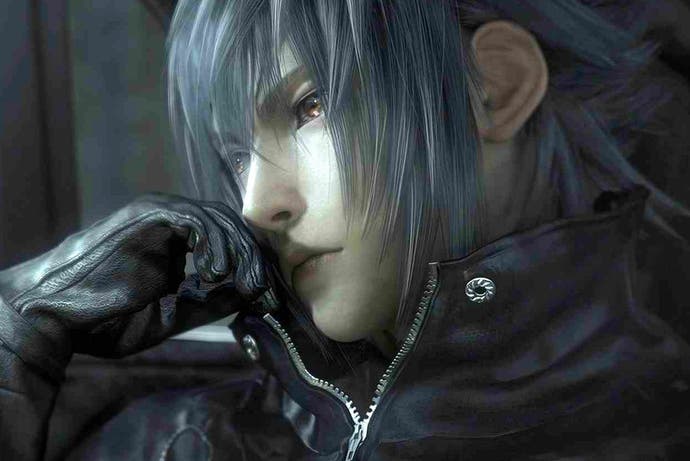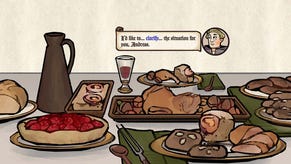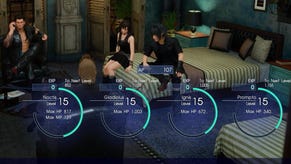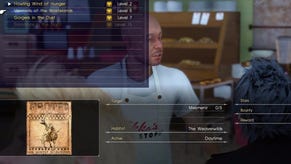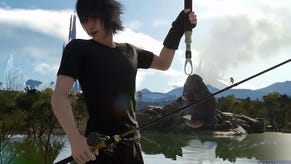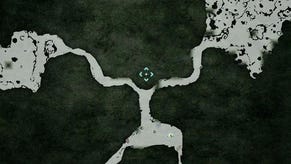Final Fantasy 15: Episode Duscae revisited
Digital Foundry gets to grips with version 2.0 of the demo.
Only available as bundled bonus with Final Fantasy Type-0 HD, the Final Fantasy 15 demo impressed us with the scale of its technological ambition, but fell short in terms of performance. But that's OK for now - the game is still deep in development, after all. Now, in an unprecedented move, Square-Enix has seen fit to update this demo based on real feedback from fans around the world. It's a fascinating new approach to game development from the Japanese giant - and with version 2.0 of Final Fantasy 15 Episode Duscae comes a whole host of improvements and changes.
Most of the work is focused on gameplay, but changes to the underlying technology have been made too, resulting in a more polished experience. While still rough around the edges, this Luminous Studio 1.5-powered experience is shaping up as one of the most ambitious titles we've seen so far this generation. Combining a massive open world with full global illumination, advanced animation capabilities, a realistic physically-based materials system, and GPU accelerated particles is no small task. However, with the poor performance observed previously, the question is to what extent the developer's vision is achievable while still handing in an acceptably smooth gameplay experience.
Initial impressions are mostly positive thanks to a much faster, more responsive camera system and controls. Battles play out much more smoothly thanks to an improved lock-on system, faster blocking abilities, and a dodge roll. Unlike the original release, the camera now properly tracks locked-on enemies while simultaneously zooming out, making it much easier to keep track of your targets while surveying the battle at large. These simple tweaks make a tremendous difference in terms of playability, even when the frame-rate falters.
And falter it will. For all that the game is doing right, its frame-rate remains a real point of concern. The PS4 version at least sees some genuine signs of improvements across a run of play. On average, we're looking at a 2-3fps boost with version 2.0 - just enough of an improvement to bring a number of areas closer to hitting a stable 30fps. Frame-times are still rather inconsistent though, preventing the game from totally consistent fluidity, but the good news here is that there's clear progress here. Curiously, cut-scene performance remains identical to the original release.
It's a somewhat different story on Xbox One though. The original demo ran much slower than its PS4 equivalent and disappointingly, performance remains extremely similar. This means frame-rates that consistently miss the 30fps target, with screen-tear regularly intruding on overall image integrity. Just as before, the more demanding scenes see dips into the teens with our lowest recorded moment coming in at a lamentable 12fps.
Comparing the two, it seems pretty clear that the developer has its work cut out on Xbox One, assuming a locked 30fps is indeed the target. On PlayStation 4, a relatively solid frame-rate doesn't seem completely far-fetched for the final product based on its current performance profile, but the question is to what extent Square-Enix can bring the Microsoft platform up to par.
Additional analysis:
Image quality wise, changes are relatively minor. The same choice of resolution is in place - 1600x900 on PS4 and 1408x792 on Xbox One - and numerous other problems. The same "blurry yet jaggy" image quality remains in effect throughout, but on the bright side, texture filtering has at least received a small boost in specific areas. Even at 1600x900, some decent AA could conceivably clean up the PS4 version to a more respectable state but 792p on Xbox One is just too low - though with the performance problems here it seems like a boost might prove difficult.
We also noted a change in the way foliage is rendered, with grass in particular using a deeper shade of green that stands out more against the terrain. The slight change in hue combined with a different method of shading is definitely a marked improvement. Object placement is also different in the new code, with various towers and rocks now appearing in places where they previously did not. Curiously, we noted a strange glitch on Xbox One in which the sky started flickering wildly as we explored the terrain - something we never encountered in version 1.0, and something that isn't an issue on the PlayStation 4 code.
What's odd is that some of the rendering bugs fixed in the PS4 code continue to exhibit behavior consistent with the original release on Xbox One. For instance, when sliding between the cracks during cave exploration, the original version used a more aggressive depth of field effect that rendered the whole image out of focus - this was corrected on PS4 while the Xbox One version still mirrors the original release. There are definite visual changes on Xbox One, so things have changed, but it may well be the case that development on the Microsoft platform is lagging behind.

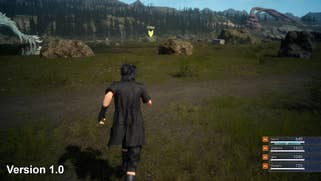
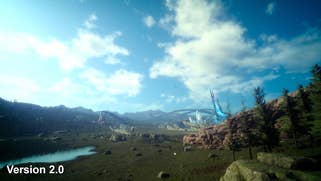


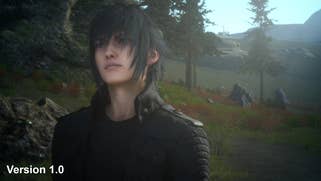
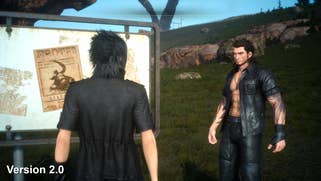
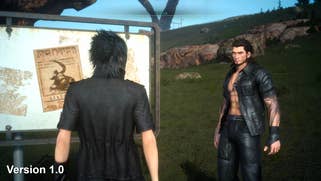
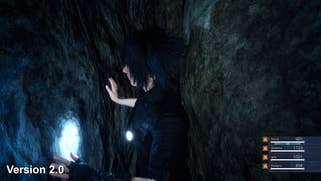
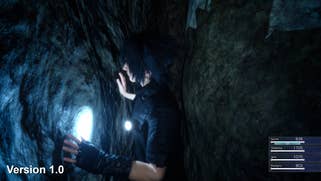
So if technical improvements are relatively slight, it's safe to say that the lion's share of the upgrades are implemented via new gameplay features and additional content - pretty ordinary stuff for an update to a game but almost unheard of for a demo. Some of this content, such as the side excursions available after resting for the night, really smooth out the experience and help give the impression of a more persistent journey. The ability to use chain attacks - which are basically powerful quick-time events - is also added, providing another option for combat. A number of additional quests are also peppered about the terrain, while the massive lake-dwelling creatures can now be engaged in combat. The fact that all of these changes were added to a mere demo makes it all the more impressive, and helps to give the feeling that players are playing an active role in the game's progression.
Overall, version 2.0 of Episode Duscae is not a transformative experience, but it does give a unique insight into the development process. The fact that the team has been so transparent since taking over the project is a fascinating change of pace from Square-Enix's typically more secretive nature. We've seen multiple iterations of Final Fantasy demos in the past - there were two PlayStation demos for Final Fantasy 7, after all - but never have the changes been influenced so directly by the players.
Ultimately though, we're left feeling much the same about the game's potential as before - optimistic but a tad wary. Three months isn't a lot of time between releases so the lack of a radical performance improvement really isn't all that surprising (and the boosts we do see are obviously welcome) but concerns remain. Luminous Studio is certainly an ambitious engine and one we'd really like to see shine: many of the things being attempted here have been dropped in favour of less intensive solutions in a number of other games and engines. We can only hope that by release, the team is able to hit the performance target on console without compromising on its grand vision.
